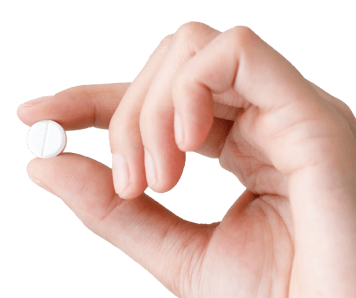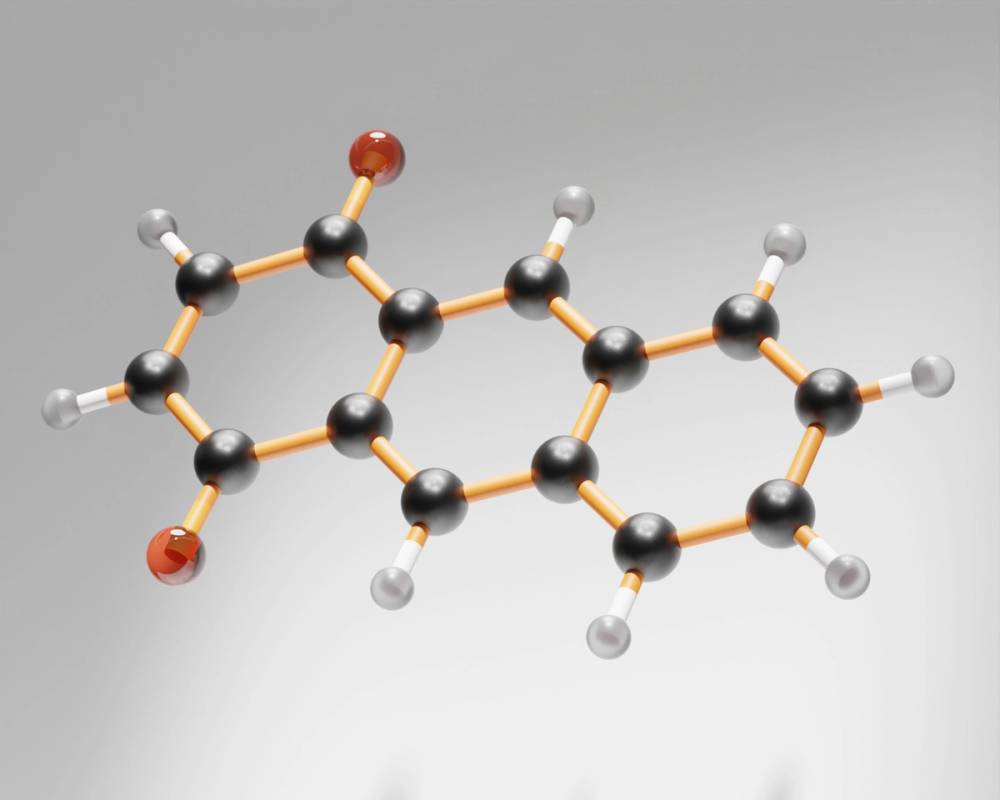Key takeaways:
- Maximus’ EP Protocol offers an alternative to traditional testosterone replacement therapy (TRT) for men experiencing symptoms of low testosterone.
- Enclomiphene citrate, a prescription medication included in the protocol, stimulates the body to produce more testosterone without negatively impacting fertility.
- The Protocol combines prescription enclomiphene with at-home blood testing, ongoing monitoring, and health coaching to improve health behaviors.
- Maximus' EP Protocol has been backed by studies confirming its safety and efficacy with minimal side effects reported.
If you’re struggling with symptoms of low testosterone, like fatigue, low libido, depression, and increased body fat, you may have considered going on testosterone replacement therapy (TRT). While highly effective, TRT isn’t the best choice for everyone, especially if you hope to have kids one day, as the long-term treatment is associated with side effects like low sperm count and testicular shrinkage.
Maximus’ EP Protocol offers an alternative path to TRT for men looking to raise their T levels without risking their fertility. Combining prescription enclomiphene citrate with at-home lab testing, health coaching, and a customized treatment plan, this protocol is an option for men who want to enhance their overall health and well-being with the power of more testosterone.
Find out more about how the protocol works, how long it takes to work, and how to decide if it’s right for you.
Is the Maximus EP Protocol TRT?
First things first, the Maximus EP Protocol is not TRT.
As the name suggests, TRT replaces your body’s testosterone with a synthetic version of the hormone. The EP Protocol is different because it restores your testosterone by stimulating your body to make more of the hormone with prescription enclomiphene citrate.
What is enclomiphene citrate?
Enclomiphene citrate is an oral prescription medication that belongs to a class of drugs called selective estrogen receptor modulators (SERMs). These drugs work by regulating how estrogen works in your body.
Clomid® (clomiphene citrate) is another SERM, but it is composed of two isomers: enclomiphene and zuclomiphene. Enclomiphene is an estrogen antagonist, which means it blocks estrogen, while zuclomiphene is an estrogen agonist, which means it increases estrogen. The estrogen-boosting effects of zuclomiphene are thought to contribute to the various emotional side effects associated with clomiphene, and very little to the drug’s intended outcomes of boosting testosterone. Therefore, enclomiphene citrate without zuclomiphene is a more efficient way of boosting testosterone without estrogen-related side effects.
What does enclomiphene citrate do?
As an estrogen antagonist, enclomiphene citrate binds to estrogen receptors in your brain, which tricks your body into thinking it’s not getting enough estrogen. Because small amounts of estrogen are converted from testosterone, this blocking effect prompts the body to amp up testosterone production in order to make more estrogen. However, this extra testosterone doesn’t get converted to estrogen (thanks to that blocking effect); the result is more testosterone for your body to use.
Is enclomiphene citrate as effective as TRT?
While TRT is the best way to achieve supraphysiologic levels of testosterone (meaning: giant leaps in a short amount of time), especially if you use fast-acting TRT injections, this method is also associated with more side effects, including infertility.
In studies comparing enclomiphene to TRT, both testosterone treatments have been shown to increase testosterone, but enclomiphene (when combined with native testosterone) does not negatively impact sperm production like TRT, making it a friendlier choice for those who wish to preserve their fertility.
Why does the EP Protocol contain pregnenolone?
Along with enclomiphene citrate, the tablets prescribed in the Maximus EP Protocol also contain pregnenolone, sometimes referred to as the grandfather hormone. Originating from cholesterol, pregnenolone is the precursor to numerous essential hormones like DHEA, progesterone, testosterone, estrogen, and cortisol. Given its crucial role in this intricate network of physiological functions, pregnenolone enhances the effectiveness of enclomiphene while providing a natural energy boost.
Besides medication, what else does the EP Protocol offer?
Medication is just one way to improve your testosterone levels. There are a variety of other actions you can take, like establishing a solid exercise routine, eating a well-balanced diet with plenty of protein, getting adequate sleep, and even taking dietary supplements, which can all have a positive effect on your testosterone levels.
The Maximus EP Protocol recognizes the value in these complementary activities, which is why every customer receives a customized treatment plan to enhance their lifestyle with access to health coaching. Before starting treatment, you’ll meet with a board-licensed physician who will assess your symptoms and medical history to decide if the protocol is right for you, and you’ll complete thorough lab tests to establish your baseline testosterone levels. After starting treatment (if you’re given the green light) you’ll also take follow-up labs to ensure the protocol is working or to adjust dosage if there’s room for improvement.
Who is the EP Protocol for?
The EP Protocol is ideal for any man looking to optimize his health and performance with more testosterone, whether he has been diagnosed with low testosterone or not. Some hints that you may benefit from the protocol is if you’re dealing with any of the following common symptoms of low testosterone:
- Low libido
- Erectile dysfunction
- Fatigue and low motivation
- Depression and irritability
- Increased body fat
- Loss of lean body mass
- Loss of body hair
- Breast growth
- Weakness, loss of strength
While these signs and symptoms may point towards low testosterone, getting your levels tested (both total and free testosterone) can provide more data on whether or not you could use a testosterone boost. Even if you have these symptoms and your test results read “low,” you will still need to meet with a doctor to be cleared for treatment. They’ll ask questions about your full medical history and health goals before customizing a plan for your exact needs.
Is the EP Protocol backed by studies?
Beyond studies confirming enclomiphene’s safety and efficacy in treating low testosterone without negatively impacting fertility, there is also published research supporting Maximus’ EP Protocol specifically.
The white paper “Maximus’ EP Protocol is a safe and effective way of increasing testosterone and well-being in hypogonadal and eugonadal men,” which evaluated 1,250 men on the protocol, revealed the following:
- The protocol significantly increased free and total testosterone levels (89.7% and 81.8% relative increase at follow-up, respectively).
- In a secondary analysis that excluded 80 men suspected of having primary hypogonadism or prior TRT use, subjects saw, on average, a 96.5% increase in free testosterone and a 87.7% increase in total testosterone.
- Most participants stayed on the protocol long-term (three or more years), without experiencing adverse effects.
- There were also improvements in well-being scores, with increases in libido, mood, energy, and athletic and work performance.
Does the EP Protocol have side effects?
As confirmed in the white paper study, the EP Protocol is not associated with adverse side effects, even when used long-term. If you stop taking the protocol, your testosterone levels will simply return to baseline, so it is recommended to take the medication as long as it is helping.
Side effects reported in phase II and phase III clinical trials were considered minimal, occurring less than 4% of patients, and included headache, nausea, common cold, hot flush, joint pain, and dizziness.
Enclomiphene use is also not associated with hair loss, a common side effect of TRT. Unlike TRT, which is known to increase DHT disproportionately (a hormone known to advance hair loss in those who are genetically predisposed), enclomiphene doesn't increase DHT:T ratio , making it the more hair-friendly option.
How long does it take for the EP Protocol to work?
Some research shows enclomiphene can increase testosterone levels within just 14 days, but it should be taken long-term to maintain these improvements. But don’t sweat it if you miss a dose here and there. While enclomiphene has a relatively short half-life of around 10 hours, studies show your testosterone levels will remain high for at least one week after stopping treatment (unlike TRT, where a missed dose may cause your T levels to plummet and lead to undesirable side effects).
How much does the EP Protocol cost?
The EP Protocol treatment is priced at $199.99 per month, with discounted subscriptions available. This cost covers both your doctor consultation and medication (if you are cleared for treatment). Lab tests are required during the first two months, with each costing $72.50.
Disclaimer: The contents of this article, including, but not limited to, text, graphics, images, and other information, is for information purposes only and does not constitute medical advice. The information contained herein is not a substitute for and should never be relied upon for professional medical advice. The content is not meant to be complete or exhaustive or to be applicable to any specific individual's medical condition. You should consult a licensed healthcare professional before starting any health protocol and seek the advice of your physician or other medical professional if you have questions or concerns about a medical condition. Always talk to your doctor about the risks and benefits of any treatment. Never disregard or delay seeking professional medical advice or treatment because of something you have read on this site. Maximus does not recommend, endorse, or make any representation about the efficacy, appropriateness, or suitability of any specific test, products, procedures, treatments, services, opinions, healthcare providers or other information contained herein. Maximus is not responsible for, nor will they bear any liability for, the content provided herein or any actions or outcomes resulting from or related to its use.








